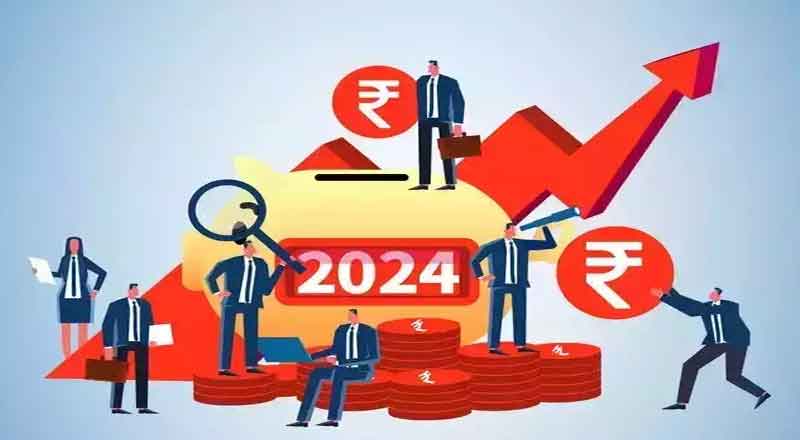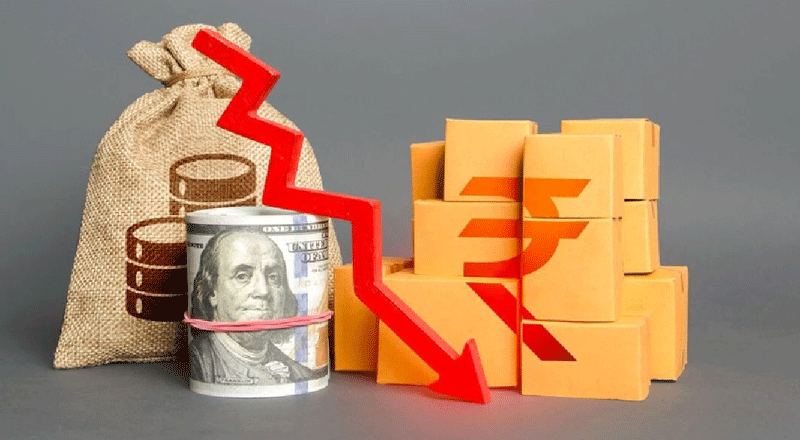Campaigning for the Lok Sabha elections 2024 is in full swing with the voting in the first phase set to begin on April 19. The track record of the government on the issue of economy comes into the spotlight during the general elections. From economic development to mehengai, both the ruling party and opposition address these issues in hopes to get votes in their favour.
While Narendra Modi-led National Democratic Alliance (NDA) claims 10 years of strong growth, reforms and development, the Indian National Developmental Inclusive Alliance (INDIA) is hoping to counter the government on the issue of inflation and unemployment.
With the data on GDP growth, inflation and jobs, an analysis of the performance of Modi government throws light on the performance of key indicators.
GDP Growth
A key plank of PM Modi’s reelection campaign is the goal to make India the third largest economy by 2027. In 2014, India was the tenth largest economy with GDP of $2 trillion.
Currently, the Indian economy’s size is around $3.75 trillion and Modi government wants to achieve the target of $5 trillion by financial year 2028. Strong 8.4 per cent GDP growth in the third quarter of financial year 2024 has boosted the ambitions.
But how has the performance been throughout Modi government’s 10-year tenure? CMIE data showed that the average growth rate between the financial years 2015 and 2024 was 6 per cent. The negative growth rate due to the Covid-19 pandemic dragged down the average.
Compared to the 10 years of Modi government, the average growth during the UPA I and II governments under former Prime Minister Manmohan Singh stood at 6.8 per cent. During the UPA regime, the major disruption came from the global financial crisis in 2008.
The issue of increasing prices of daily needs always manages to find a mention in the campaign speeches of opposition during the election. In the last one year, consumer inflation has shot up frequently due to food prices not coming down.
In March, food inflation remained high at 8.5 per cent despite the overall inflation being at 4.85 per cent. During the 2014 elections, the Bharatiya Janata Party had targeted the Congress regime due to episodes of extremely high inflation. CPI inflation for the financial years 2013 and 2014 was recorded at 10.05 per cent and 9.38 per cent respectively.
Under the Modi government, the average CPI inflation in the first and second tenures stood at 4.45 per cent and 5.69 per cent. The government had introduced a statutory framework for the Reserve Bank of India in 2016 to keep inflation in check at 4 per cent. The tolerance band set for retail inflation was 2-6 per cent.
Another issue which has been in the spotlight recently is the unemployment situation of India. A report released by the International Labour Organisation and Institute of Human Development revealed that youth accounted for 83 per cent of the unemployed population.
As per a government employment survey for the financial year 2013-14, the unemployment rate was recorded at 4.9 per cent at all India level. The latest periodic labour force survey (PLFS) showed that the unemployment rate was 3.1 per cent last year, coming down from 3.6 per cent in 2022.
A key concern has been the quality of jobs as the share of self-employed has gone up in the last five years. The share of self-employment rose from 52.1 per cent in financial year 2018–19 to 57.3 per cent in 2022–23. Self-employed workers earn less on average than regular wage workers.
CMIE data showed that the situation of unemployment is worse among highly educated persons. The unemployment rate is highest among graduates at 17.31 per cent compared to 3.96 per cent for persons with no education.
(With inputs from agencies)





